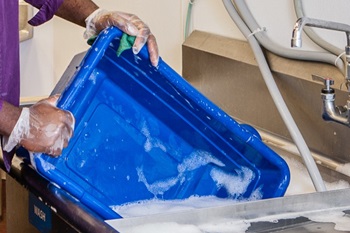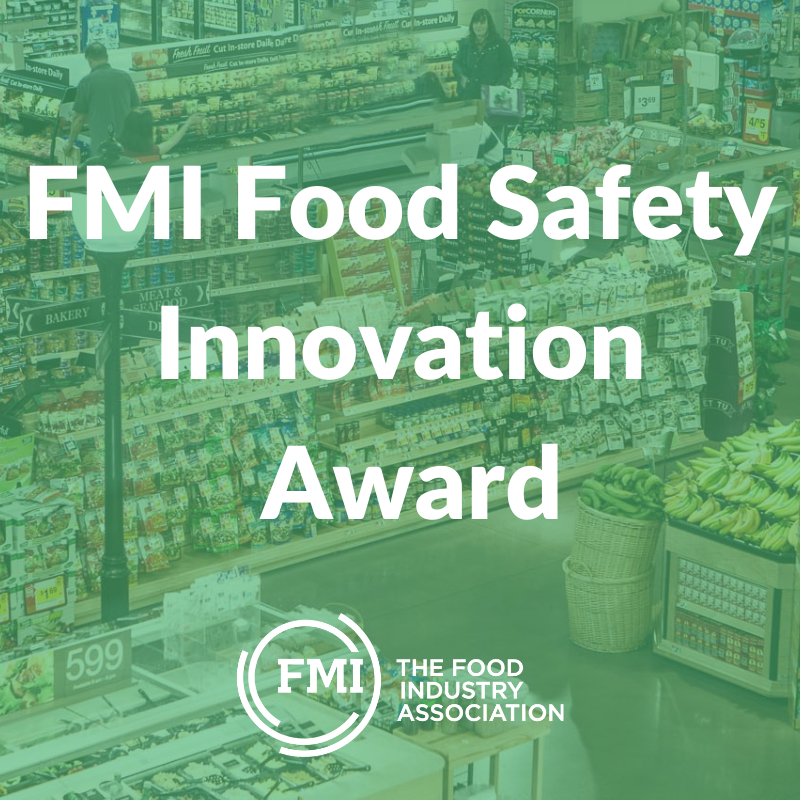By Ashley Eisenbeiser, MS, CFS, Senior Director, Food and Product Safety Programs, FMI

“What do you do when no one is looking?” In the context of food safety, this question is often used to encourage individuals to prioritize food safety practices even when they are not being observed or monitored.
Establishing a Risk Mindset & Food Safety Culture
The Safe Quality Food Institute (SQFI), a division of FMI, has been focused on helping more than 12,000 SQF certified sites develop a risk mindset. At a recent SQF digital seminar, Brian Neal, Technical Manager for Eurofins, an SQF Certification Body, emphasized the importance of keeping food safety top of mind for every action, every day, across the organization. “Everyone must be aware of food safety culture. It is a companywide behavior, and management commitment is key. If they do not practice what they preach, it will not be successful.”
To ensure that food safety principles and practices drive workers and leaders across every level of an organization – whether they are undergoing a third-party audit for SQF certification or just working an everyday shift – a company needs to communicate and demonstrate their commitment to food safety. “We talk about communication a lot and that’s because communication is the most important part of not just food safety culture, but any system you have in place,” explains Neal.
Among other efforts, Neal highlights effective communication strategies and tools that can help ensure a company adheres to the food safety culture requirement as outlined in SQF Edition 9, Appendix 2.
Leadership by Example
The adage about practicing what you preach starts at the top. For example, do managers wash their hands when they go into a room or on the floor? “We expect employees to do it, but management needs to do that, too,” says Neal. The buy-in and safety-centric behavior extends to the most senior-level executives.
Talking and Seeing Culture in Action
Communicating the importance of a food safety culture takes many forms. “Include food safety culture in policy statements. Develop a catchy slogan that you can put in a banner when employees walk into the building or in the production areas so that they can see it and it reminds them of culture,” advises Neal. “Also, you need to keep things open. If someone has an issue, do they feel comfortable communicating those issues that are or are not getting addressed?” He recommends including food safety culture in the docket in employee and management meetings to gauge and react to potential gaps in food safety and food safety successes.
All-Encompassing Training
Food safety training should emphasize the imperative of having a holistic food safety culture, both as part of the onboarding process for new hires as well as with existing employees at least annually. It should also cover corrective actions when it’s determined that proper food safety culture is not being followed. “We have always had training on HACCP and GMPs, but go outside that to cover food safety culture. Make sure people understand what it is and share examples of incidents they may see and how they can report it,” Neal recommends.
By prioritizing food safety even when no one is watching, individuals can help create a strong food safety culture that values the health and well-being of consumers.
For more information on SQF Certification, visit sqfi.com.


 Industry Topics address your specific area of expertise with resources, reports, events and more.
Industry Topics address your specific area of expertise with resources, reports, events and more.
 Our Research covers consumer behavior and retail operation benchmarks so you can make informed business decisions.
Our Research covers consumer behavior and retail operation benchmarks so you can make informed business decisions.
 Events and Education including online and in-person help you advance your food retail career.
Events and Education including online and in-person help you advance your food retail career.
 Food Safety training, resources and guidance that help you create a company food safety culture.
Food Safety training, resources and guidance that help you create a company food safety culture.
 Government Affairs work — federal and state — on the latest food industry policy, regulatory and legislative issues.
Government Affairs work — federal and state — on the latest food industry policy, regulatory and legislative issues.
 Get Involved. From industry awards to newsletters and committees, these resources help you take advantage of your membership.
Get Involved. From industry awards to newsletters and committees, these resources help you take advantage of your membership.
 Best practices, guidance documents, infographics, signage and more for the food industry on the COVID-19 pandemic.
Best practices, guidance documents, infographics, signage and more for the food industry on the COVID-19 pandemic.
